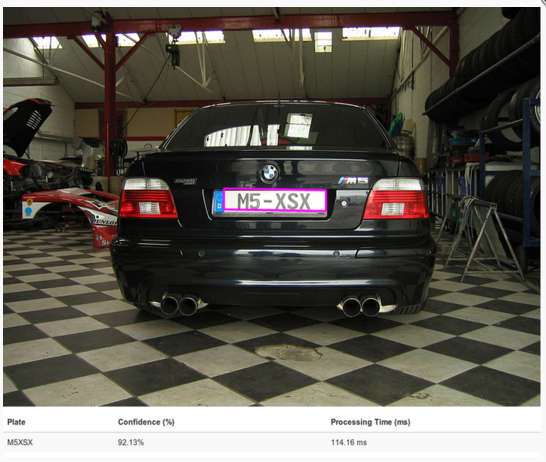
License Plate Recognition Source Code Compiler
SURF is the speed up version of SIFT.Both SIFT and SURF are famous and robust keypoint detection algorithm for feature detection and extraction.Unfortunately. The pipeline stages occur in the following order: Pipeline Phase C++ class Description Detection regiondetector.cpp Finds potential license plate regions Binarization binarizewolf.cpp Converts the plate region image into black and white Char Analysis characteranalysis.cpp Finds character-sized “blobs” in the plate region Plate Edges.
In this tutorial I show how to use the Tesseract – Optical Character Recognition (OCR) in conjunction with the OpenCV library to detect text on a license plate recognition application. Tesseract is an optical character recognition engine for various operating systems. It is free software, released under the Apache License, Version 2.0, and development has been sponsored by Google since 2006. Tesseract is considered one of the most accurate open source OCR engines currently available. The Tesseract engine was originally developed as proprietary software at Hewlett Packard labs in Bristol, England and Greeley, Colorado between 1985 and 1994, with some more changes made in 1996 to port to Windows, and some migration from C to C++ in 1998. A lot of the code was written in C, and then some more was written in C++.
Since then all the code has been converted to at least compile with a C++ compiler. Very little work was done in the following decade. It was then released as open source in 2005 by Hewlett Packard and the University of Nevada, Las Vegas (UNLV). Tesseract development has been sponsored by Google since 2006. OpenCV was built to provide a common infrastructure for computer vision applications and to accelerate the use of machine perception in the commercial products. Being a BSD-licensed product, OpenCV makes it easy for businesses to utilize and modify the code.
The library has more than 2500 optimized algorithms, which includes a comprehensive set of both classic and state-of-the-art computer vision and machine learning algorithms. These algorithms can be used to detect and recognize faces, identify objects, classify human actions in videos, track camera movements, track moving objects, extract 3D models of objects, produce 3D point clouds from stereo cameras, stitch images together to produce a high resolution image of an entire scene, find similar images from an image database, remove red eyes from images taken using flash, follow eye movements, recognize scenery and establish markers to overlay it with augmented reality, etc. OpenCV has more than 47 thousand people in their user community and an estimated number of downloads exceeding 7 million. The library is used extensively in companies, research groups and by governmental bodies. Email: fpiscani@stemapks.com twitter: git: https://github.com/cesco345.
Can it possible for you to share a demo softwer with me it is working for India or not plz share me on we are getting a difficulty reading of 2 layer of number plate if you have any solution to resolve this problem please share with us on my email ID PROBLEM IDENTIFICATION In India, number plate standards are rarely followed Wide variations are found in terms of font types, script, size, placement and color of the number plates. Zvuk lopnuvshego sharika u. In few cases, other unwanted decorations are present on the number plate. Also, unlike other countries, no special features are available on Indian number plates to ease their recognition process. Hence, currently only manual recording systems are used and ANPR has not been commercially implemented in India. Main aim of this project is to implement a method efficient in recognizing license plates in Indian conditions. Our work is not restricted to car(in which size of license plate is small),transport vehicles which carry extra stylized characters and soiled license plate. Hi, Francesco.